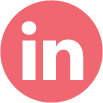Replacing Big Goals with a Mission Driven Practice
- Bruce Stanley
- Mar 5, 2021
- 3 min read
Updated: Jul 23
Why is Day Crafting primarily concerned with shaping today, this day, as the way to a good life? I began coaching leaders over 20 years ago, focusing on their skills development, quality of life, and ambitions. I noticed that nearly everyone could easily imagine exciting future goals. I was part of a programme that took executives through a deep visioning process, and at the end, they knew this: where I want to be in x months or x years' time. However, almost none of them knew how to positively impact the quality of the day they were actually in, and most goals were abandoned a matter of weeks later. The part of our thinking that imagines the future is no match for the identity and behaviour part that dominates the present.
There’s a particular kind of self-help thinking that urges us to dream bigger, imagine the five-year plan, visualise success and step into the future version of ourselves. I think it’s doing more harm than good.

Our thinking is sometimes conflicted in ways we are only occasionally aware of. Analogies provide a helpful way to describe these conflicts. In this case, the elephant and rider represent our automatic versus controlled thinking. Our well-developed automatic thinking, the elephant, has served us well and allows us to function efficiently in the present moment while assessing various risks simultaneously. Bolted onto this highly evolved function is the relatively new module containing the controlled language, logic-based thinking, and future-planning functions, the rider.
The rider is very new, with alpha-ware still in development. One bug in its software is that it believes it is in charge, but in a clash of wills, it is no match for the elephant: the efficient, present-moment, highly evolved, automatic thinking part. The problem with goals ... If I were to ask you where you want your life to be in a year's time, it would be the rider who answers. Your rider may be in complete harmony with your elephant, but if that isn't the case and the elephant doesn't share the goal, you're not going to achieve it.
Culture tells the wrong story about success.
Results are mainly shaped by the current practice system that engages both elephant and rider in the present moment. The elephant cares little about the future. Stories about innovation (achieving goals) excite the rider but offer no practical insights. Instead, we need to understand how to get everyone to engage in innovating—the verb. This is a very different and less glamorous subject. The tasks ahead should be designed to fit the craftsperson's daily routine. The craftsperson works in the present with a sense of harmony between their thinking states. In developing Day Crafting, I'm aiming to optimise productive, skilled practice on a daily basis—the most meaningful unit of measurement. I have been developing elephant training methods since identifying the coaching problems described above.
Leading riders is harder work
Some leaders expect the future goal to motivate because we tend to overlook the present-moment steps needed to reach it, which we instinctively know will be demanding, problematic, or boring – and often they will be. I’ve worked for organisations where the most exciting description of the business appears only as a fantasy in the job adverts, written to appeal to the applicant’s aspirations. The behavioural, now-focused disciplines of the craftsperson are a different methodology and a distinct skill set. They enable a mindset shift from future goals to the present-day working surface. This is how adults flourish, grow, and learn – but work must be organised to support this. By focusing on outcome-based goals outside the control of most employees, we increase pressure, diminish confidence – and annoy elephants. For individuals as well as organisations, solving problems at the results level risks a temporary fix (and no lasting wellbeing), but solving at the system-of-practice level paves the way for genuine improvements across multiple areas.
From goal driven to mission driven
We expect people to give 100% every day. This is a challenging standard when focused on future goals. It makes logical sense to our riders but doesn’t cut it with our elephants, who see the future as being out of their hands. How might we work with the elephant and rider?
Shifting from a goal-driven to a mission-driven approach engages the whole person in the present moment. Giving 100% to the mission, using sources of energy that truly energise a person and quickly replenish, allows them to do the same the next day. Customers prefer mission-driven employees; goal-driven people are much more likely to be transactional, while those who are mission-driven are more likely to be transformational. Lastly, for a business, Day Crafting supports one of the most vital objectives: how can a team’s most valuable asset, its people, optimise their use of its rarest resource, its time, to achieve sustainable, meaningful progress? If you'd like to explore this further, please get in touch below.





